Qom Atiq Mosque's History and Architecture
Qom Atiq Mosque, also known as Jame Mosque, is a historical gem located in the heart of Qom city. Situated on Azar Street, in the Jame Mosque neighborhood, and near the Rey Gate, this ancient mosque stands as a testament to Iran's rich architectural and religious heritage.
The mosque is surrounded by notable landmarks, including the holy shrine of Hazrat Fatima Masoumeh and the historical house of Yazdan Panah.
History of Qom Atiq Mosque
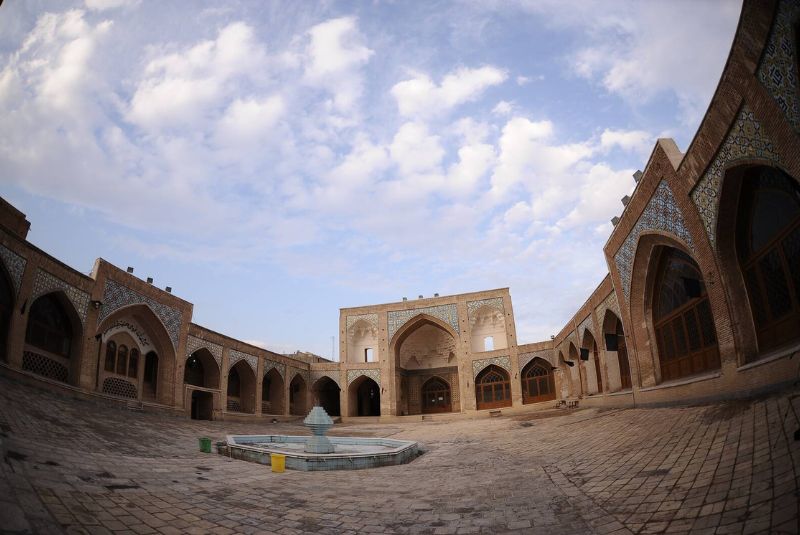
The exact date of construction for the Atiq Mosque of Qom is debated among historians. However, many architects and archaeologists attribute its origins to the Seljuk period, which seems most plausible based on existing evidence. Over the centuries, the mosque has undergone several renovations and expansions, each adding to its historical and cultural significance.
Founders and Influences
The mosque was likely influenced by the Seljuk rulers who were known for their contributions to Persian architecture. The historical context of its construction reflects the religious and political dynamics of the era.
Restoration Efforts
Throughout its history, the Atiq Mosque has seen numerous restoration efforts, particularly during the Safavid and Qajar periods. Modern conservation techniques continue to preserve its structure and artistic elements.
Architecture of Qom Atiq Mosque
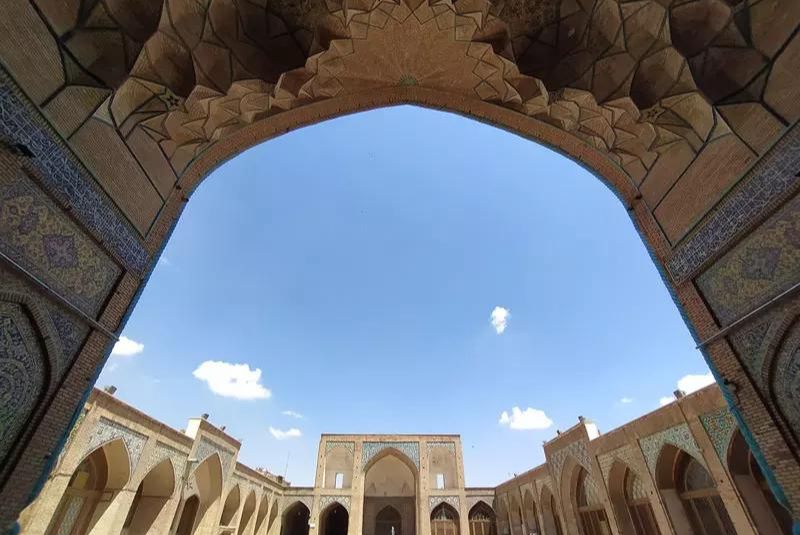
Covering an area of approximately 6,000 square meters, the Atiq Mosque boasts various architectural elements, including entrances, a dome, courtyards, and shabestans.
Materials and Techniques
The mosque was constructed using traditional materials such as bricks, plaster, and wood. Techniques like muqarnas (ornamental vaulting) and intricate tile work are evident in its design.
Symbolism
Many architectural elements of the mosque hold symbolic meanings, reflecting Islamic beliefs and Persian cultural values. For instance, the dome symbolizes the vault of heaven, while the mihrabs indicate the direction of Mecca.
Entrances
The mosque has two entrances: the main entrance on the western side and another entrance in a side alley connecting to the northern shabestans.
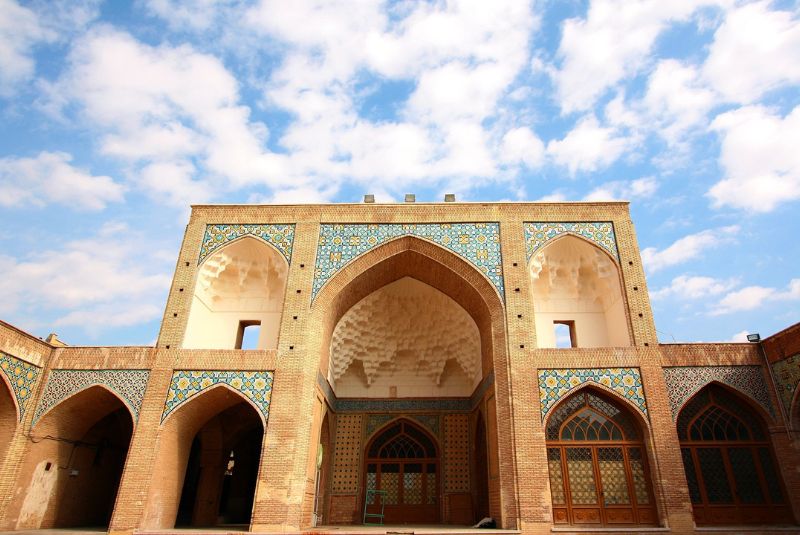
Dome
The dome, one of the oldest parts of the mosque, dates back to 529 AH (beginning of the 6th century). Although some inscriptions were destroyed during the reign of Fath-Ali Shah Qajar, the dome remains a striking feature, showcasing the grandeur of historical Persian architecture.
Courtyard
The courtyard is rectangular and surrounded by shabestans, porches, a cellar, and gushvarehs. A beautiful pond in the center enhances the mosque's serene atmosphere. A stone indicator in the courtyard helps determine the time for noon prayers, exemplifying the mosque's blend of functionality and aesthetic design.
Shabestans
The mosque features three shabestans (prayer halls) - east, north, and west. The eastern shabestan is the oldest, while the western shabestan includes an underground cellar built by Mohammed Hossein Khan Nizam al-Dawlah Shahsavand in 1926. The northern shabestan is smaller and less decorated.
Mihrabs
The mosque contains several mihrabs (prayer niches), each with unique features. The Shahneshin mihrab, dating back to the Qajar period, is notable for its seven-colored clay tiles and elegant design.
Qom Atiq Mosque Location
Address: Near Rey Gate, Azar Street, Qom city, Qom province.
Visitor Tips
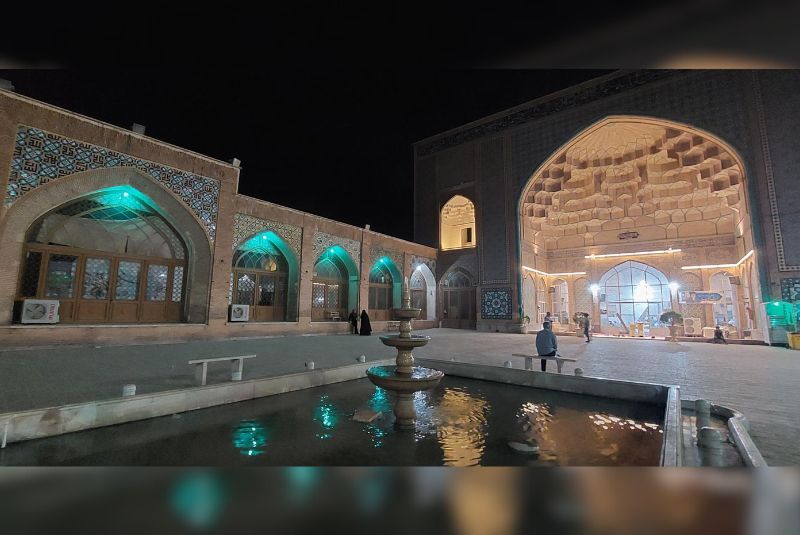
- Transportation: Due to high traffic and limited parking, using public transportation is recommended.
- Dress Code: Islamic clothing is required.
- Respect: Maintain proper etiquette and respect when visiting.
- Prayer Times: Congregational prayers for Zuhr, Asr, Maghrib, and Isha are held.
- Visiting Hours: Open to visitors outside of prayer times.
- Admission: Free entry.
Cultural and Religious Significance

The Atiq Mosque has always been a center of learning and spirituality, attracting scholars and elders from across the Islamic world. Its unique position as a hub of religious study and devotion underscores its importance not just in Iran, but throughout the Islamic world. The legends and traditions associated with the mosque continue to inspire reverence and respect, solidifying its place as a cornerstone of Islamic heritage.
Sightseeing Places Around Qom Atiq Mosque
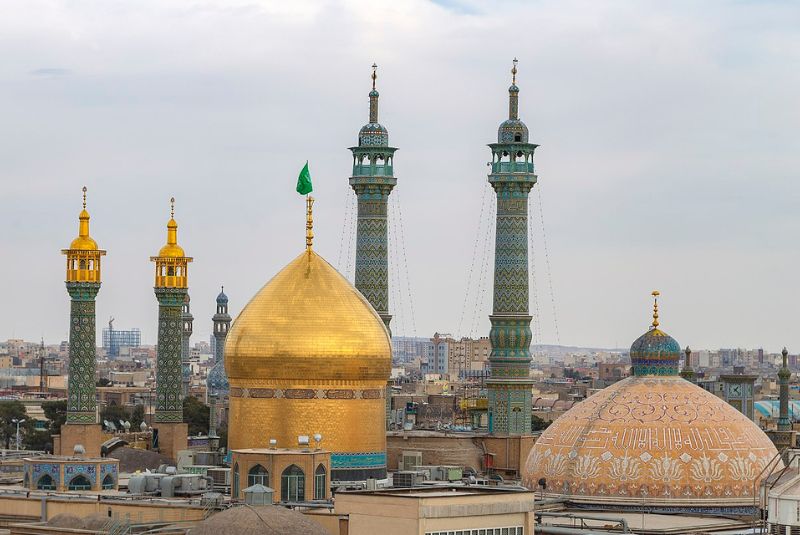
- Feyziyeh School: Dating back to the 6th century AH, this school is known for its architecture and historical significance, especially during the Safavid, Qajar, and Pahlavi eras.
- Shrine of Hazrat Masoumeh: A major religious attraction with stunning architecture, tiles, mirrors, and various sections like a mosque, library, and tombs.
Finally!
Qom Atiq Mosque stands as a monument to the architectural and religious heritage of Iran. Its historical significance, coupled with its architectural beauty, makes it a must-visit destination for those interested in exploring Iran's rich cultural fabric.
Share your story!
Comment below and let us know about your Experience.
Your story inspires others!


Comment
Leave a Comment